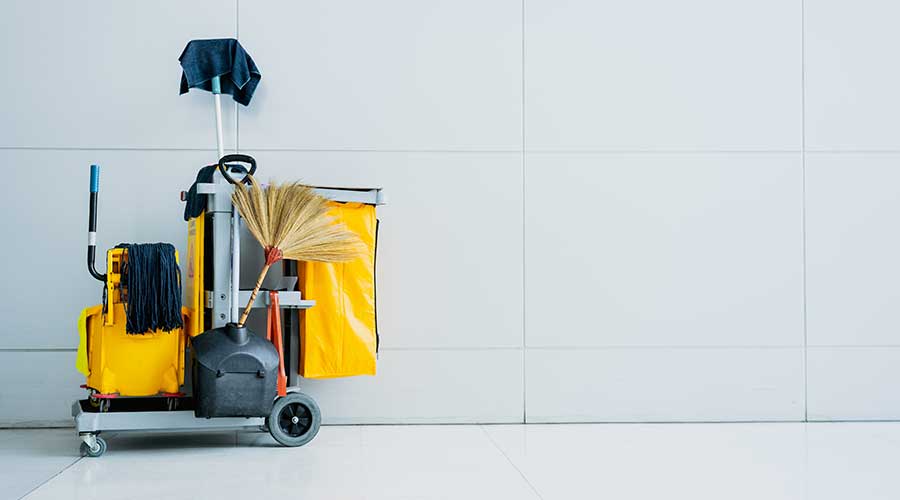Managers Discuss Motivating Technicians, Tracking Productivity
By Chris Matt, Managing Editor - Print & E-Media
OTHER PARTS OF THIS ARTICLEPt. 1: This Page
*
Rick Albert, Director of Engineering and Plant Operations, MaineGeneral Medical Center, Augusta, Maine
*
Walt Petters, Director of Maintenance and Plant Operations, Brevard County Public Schools, Rockledge, Fla.
*
Phil Resch, Associate Director, Student Housing Maintenance, Stanford University, Stanford, Calif.
One constant during the evolution of the maintenance and engineering profession has been the need for technicians and staff to be as productive as possible in a demanding work environment. Productivity continues to be top of mind for managers, and many are redefining the mantra of doing more with less.
What tools do you use to measure staff productivity?
ALBERT: We track work orders daily and monthly. When guys receive work orders, they're responsible to close out work orders each day as they're completed, with the amount of man-hours they used to accomplish the work. If we have an electrician changing a light bulb, and he identifies something else that's effectively self-reported, and he's able to fix that at the same time, we make sure that he tracks that, as well. For our maintenance and engineering staff, our staffing levels are governed by square footage of facilities that we maintain.
PETTERS: Before the CMMS (computerized maintenance management) systems came online, there really weren't any good tools to measure productivity. It's the data that comes from the CMMS that gives us a productivity measure. We use custom-productivity reports that compare estimated man-hours to actual man-hours based on the work request. Each work order or request that comes across our desk is estimated in man-hours and then compared against a weekly productivity report of actual man-hours. It's extremely hard to accurately judge how long any request will take, but we estimate based on the history of that particular facility. What that really does is, helps us to monitor our employees' time charts. It creates a sense of paying attention to their activities and the time it takes to do a job.
RESCH: With our (enterprise-management) system, we're able to view our work-order backlog, tasks completed, average time spent on tasks, etc.
What changes have you made to improve staff productivity?
PETTERS: We have created teams of employees that are on four 10-hour days for more than a service-call-type trade. It allows them to start and stop one less time a week and spend more time working than driving to and from each job. We also have lead technicians that do pre-worksite visits. When we get requests in, they go out and take a look at the job. They order materials, coordinate the work and make sure the technicians have all the tools. It keeps tools in technicians' hands and keeps them working.
ALBERT: We have gone to more ownership for our maintenance staff. Each one of our staff — electricians, boiler operators, etc. — are required to do rounds and are given ownership of particular spaces within the hospital. So we have a matrix of all our mechanical and electrical spaces and who owns them.
What measures designed to improve productivity have not worked?
PETTERS: A few years back, we wanted to put a multi-trade group of technicians on a bus and send them to a school for their workday. You might have a couple painters, a couple electricians and a plumber. We put them on one bus and sent them out to a school, but that just didn't work too well. You don't have enough storage space, you don't have the right tools, and you don't have enough equipment. If you need to run out and get materials, you don't have a vehicle to do that.
ALBERT: I have found that if you give folks ownership versus saying, "Go do this, go do that," (productivity improves).
What strategies do you employ to motivate technicians?
RESCH: Our department promotes the stewardship and ownership of our entire portfolio by all staff, including the maintenance technicians. Our maintenance staff are bargaining-unit members, which precludes individual incentives, so we promote teamwork, communication, and cooperation by way of group barbecues, birthday celebrations, and mixed-trade projects.
PETTERS: As a governmental organization, we don't have the luxury of bonuses, flexibility and incentives from a monetary standpoint. We post performance measures. We measure everything — open work orders, closed work orders, maintenance backlogs, etc. We post them at each repair center, and that gives them a sense of competition. We try to employ people that are passionate about their field. We do have employee-of-the-year recognition district-wide, and we always nominate employees that get to go to an employee-of-the-year breakfast, and they are recognized by our superintendent.
ALBERT: As far as building a team, we have periodic potluck lunches at all our campuses to bring guys together. In the summertime, we try to do periodic barbecues, as well. You really get caught up in the day's stuff and oftentimes don't have the ability to pull somebody aside to say, "Thanks for doing x, y, and z."
How do you ensure improved productivity does not compromise the quality of the work?
ALBERT: Our facility managers do periodic follow-ups on completed work orders. So they'll go backtrack on a handful of work orders for a given month to ensure everything was accomplished correctly. Right now, we're in a paper work-order system, and we're moving towards hand-held devices.
RESCH: For me, improved productivity does not translate into a degradation of quality. If you do it right the first time, that improves productivity. We also do not utilize any sort of a quota system. Our staff are multi-trades trained and cover a wide variety of tasks every day. One technician may spend an entire day on one job, then complete 15 the next day. Task-per-day goals do not help us.
PETTERS: We've never emphasized speed as a benchmark. We don't ever tell a person to hurry. We're looking at man-hours, and if we thought it was a two- or three-man-hour job and it takes 10, the only thing we ask is that they put a detailed explanation on their work order that tells us why it took longer than we anticipated.
What role does technology such as CMMS and building-automation systems play in improving productivity?
PETTERS: Our CMMS allows us to measure everything. We measure by repair center, by trade, and by type of work. We look at the balance of our in-house trades versus our requests to make sure we have the right balance of technicians. I can't imagine how you would (measure productivity without a CMMS). Every facility we have is on some level of our building-automation system (BAS). We have alarms in place in our building-automation system when it's not making nice. We log on, and we can reach it or fix it before the school ever knows there was a problem. (The BAS) is probably almost an immeasurable time saver.
ALBERT: We're in the process of designing a brand new hospital. We're hoping to break ground in late spring, early summer. (A recent) meeting was to talk about building-management systems and how much integration we want to do. We currently have a building-management system that we use for all of our HVAC systems. And we have some older, pneumatic control systems. I can't say (the control system is) absolutely state of the art because it's been put in place over time. We certainly use the controls to monitor and make adjustments to our HVAC systems. We can see the activities of the air handlers, chillers, etc. We hope with the new hospital, we're going to take a giant leap into more controls.
RESCH: For us at Stanford, worker productivity is intimately tied to our enterprise-management system. We have been using computerized work management systems and PDAs since 1998. In 2006, we transitioned to (our) enterprise system, which allows us to manage not only work orders and productivity, but also space, assets and inventory, people, and purchasing all in one system. This transition was due, in large part, to the vision and support of Rodger Whitney, executive director of student housing/chief housing officer. Rodger is very supportive of the use of technological advances in our business and works to ensure that we are utilizing the most appropriate and effective tools to manage our facilities productively and to serve our residents and customers. He has helped our department to stand at the forefront of the shift from computerized work management to a true enterprise system.
What role do hand-held devices play in allowing technicians to have real-time access related to their maintenance tasks?
ALBERT: What we've noticed is, in the world of paper work orders, you're dependent on staff to follow up with the customer to say, "I'm here to change a light bulb or I'm here to fix the leaky faucet." That follow-up doesn't always happen. What we've seen with (our new work-order system) is that when a work order goes in, there is some acknowledgement to the staff who has asked for the work that the work order has been received. That simple acknowledgement is enough for folks to know it's in the queue and know it's going to be taken care of.
PETTERS: We do not and have not used PDAs to push out work orders yet. Quite frankly, we can't find the right device (mostly due to the devices' small size).
How important is the versatility of technicians?
RESCH: Versatility is key for us. We provide all maintenance services for a system housing 12,000 people. We do have some practical divisions of labor. Our technical-trades shop (members) are all journeyman level, multi-craft tradespeople who handle HVAC, electrical, and plumbing tasks. Our carpentry and security shop handles all woodwork and locks and hardware, and our project crew manages non-trade-specific facilities support. This is vital for us, especially with the ever-increasing customer expectation that everything is an emergency and the fact that we are all doing more with less.
PETTERS: A few years back, we created a position called "facilities maintenance technician," which is required by job description to have at least five years of experience in at least two major trades. You might be a plumber and a carpenter, or you might be an electrician and an air conditioning mechanic. This kind of flexibility allows us to get a lot more work done and have a lot more versatility in a single mechanic. If we could increase our work force and have more facilities maintenance technicians, we'd get a lot more work done. They're one of our highest paid fields of expertise.
ALBERT: I believe that you always want to have a master electrician, a licensed plumber and a certified HVAC technician. Beyond that, I think we're going to more general maintenance folks. We have a lot of those folks that can do a multitude of things that are cross-discipline but don't necessarily require a licensed person to do the work. We have a per-diem guy that is a licensed plumber and a journeyman electrician, so he's crossed over into different fields.
Related Topics:











